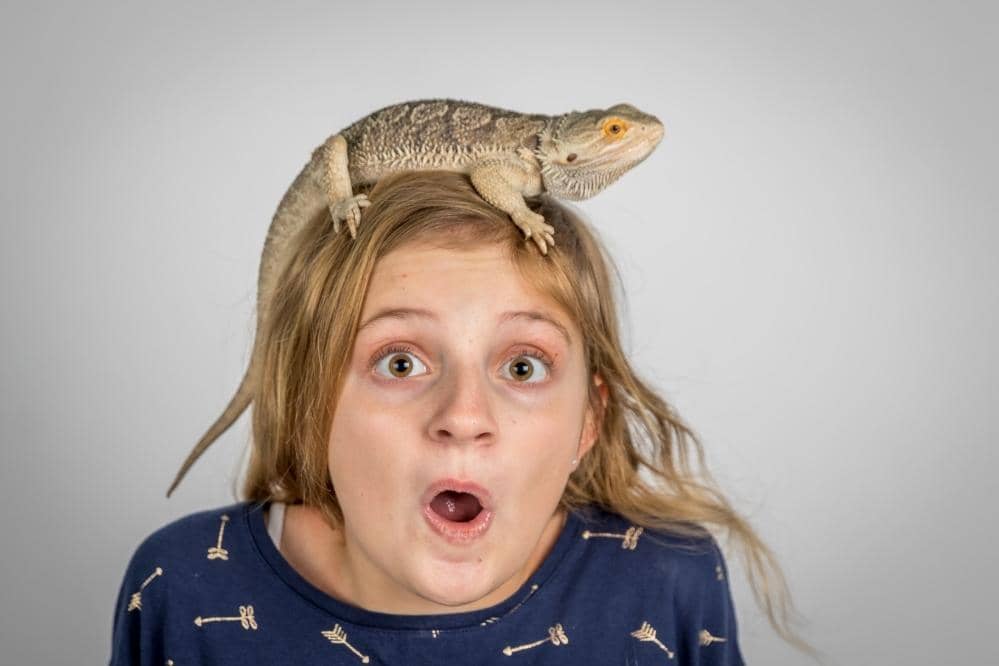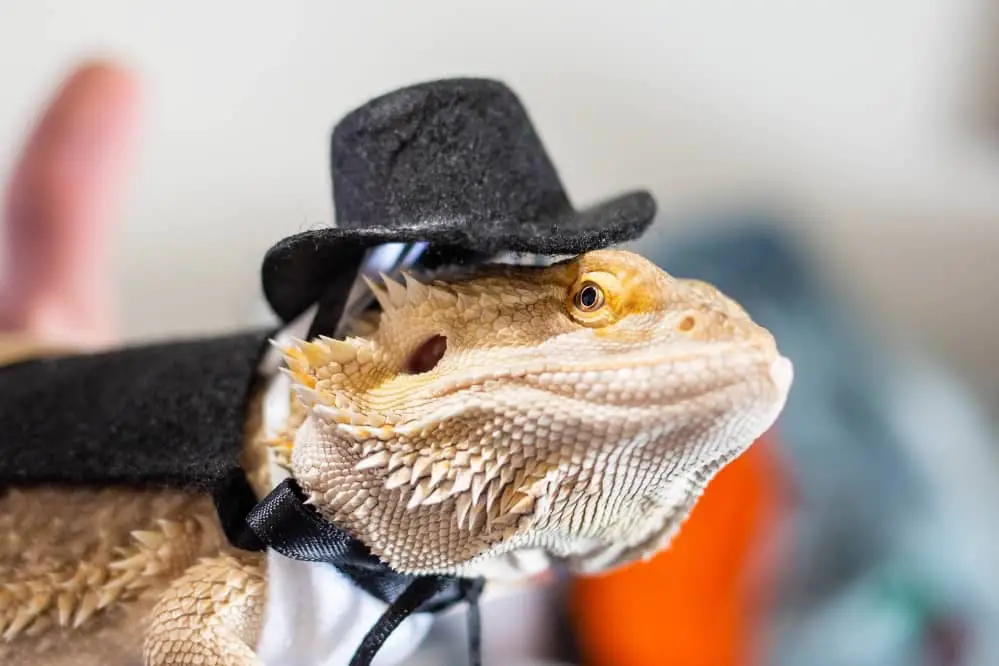Generally, bearded dragons are renowned for their distinctive appearance and behavior. However, they are considered dull, less smart, or less intelligent animals as compared to mammals. This may be true to some extent; however, the topic “how smart are bearded dragons” has been a topic of research during recent years and recent findings contradict the above mentioned beliefs.Research shows that though bearded dragons may not think to the extent we humans or some other mammals do, beardies are smarter than we think. Despite their limited cognitive abilities, bearded dragons are smart enough to learn and mimic the behavior of other beardies and solve problems. Let’s try to learn more about our bearded friend’s intelligence and smartness.
Understanding Bearded Dragon’s Brain
Bearded dragons’ minds have evolved over the centuries to enable beardies to survive the extreme habitat and climate changes during this time zone. Though the bearded dragon’s brain is comparatively simpler than some other animals (like mammals and birds) and not able to process intricate information, it is more specialized to perform some specific jobs. For example, bearded dragons are amazingly good at detecting movements and changes in light and temperature, and we all know them for their nimbleness and quick reflexes.
If we enlist reptiles and small mammals on the basis of their smartness or cognitive abilities, our bearded friends fall in the middle of the list. This shows that though bearded dragons are not as smart as some birds or mammals, they are smarter than most reptiles. Let’s see what bearded dragons are capable of or how smart bearded dragons are.
Signs Of Bearded Dragon Smartness Or Intelligence
We have quoted below some examples reflecting the smartness and cognitive abilities of bearded dragons (all are based on the latest research and findings).
Beardies Can Identify Their Owners

Even many seasoned beardie owners verify that bearded dragons know their owners. You may have observed that when you approach your bearded friend, he suddenly looks happy, scratches the glass (a sign that he is delighted to see you), or licks the air (indicating that they like your smell). In addition, sometimes beardies even come out of their hide (if he is not sleeping) to greet you. You will not observe such behavior when a stranger or even other family member approaches the beardie. Bearded dragons also behave differently when different family members approach them depending on their liking and disliking for that particular person.
Related article Do Bearded Dragons know their owners?
Beardies Recognize Owner’s Voice
It is also found that bearded dragons also remember their owner’s voice and respond quickly when you call them. However, to express this behavior, beardies may take a bit more time (than recognizing you by face), and if you repeat the same words with the same tone (soft and friendly, obviously), it will happen earlier.
Beardies Can Sense Sizes And Depths
Bearded dragons can sense sizes and depths in the same way humans do. During an experiment, when bearded dragons were given a choice to choose from big and small food portions, they always selected the bigger portion. This shows that a bearded dragon’s brain is more developed than we think because sensing portions of different sizes and processing optical illusions is not that simple (for a lizard having such a simple brain, as most of us believe).
Beardies Can Distinguish Colors

Scientists working on the behavior and cognitive abilities of bearded dragons concluded after a series of experiments that beardies can differentiate between colors. During the study, they also found that brighter colors are preferred by beardies. In addition, some bearded dragons also show their liking for specific colors and prefer to use feed bowls, water bowls, or other objects of that particular color. Some bearded dragons also refused to eat the food of specific colors. So if your bearded friend doesn’t eat a particular food, it can be a matter of color rather than taste.
Beardies Can Detect Light & Temperature Variation In The Environment
You may have heard that bearded dragons have a third eye on their head; therefore, they can see a predator bird approaching them and escape. This popular notion is due to their ability to detect changes in light intensity due to the shadow of the bird hovering above them. In addition, bearded dragons can sense minor environmental temperature changes and continue to change their location depending on their body’s temperature. Therefore it is recommended to establish a continuous thermal gradient inside the vivarium so that beardies may select a place to rest that best suits them.
Beardies Can Be Tamed Or Trained
Though you can’t train a bearded dragon like a dog or cat, our bearded friends can learn simple tasks like responding to your call, potty training, walking on a leash, etc. However, it’s crucial for the owner to know the right way of training and always use positive reinforcement methods to make learning a fun activity for your beardie.
Beardies Can Learn From Other Beardies Or Imitate Their Actions
As mentioned earlier, bearded dragons can be tamed or taught simple tricks. Hence, scientists at the University of Lincoln in the U.K. and Hungary used this ability to find out whether beardies can learn to perform certain tasks (or solve problems) or mimic the action of their species.

They trained two bearded dragons to open a simple wire door to get their favorite worms to satisfy their hunger and made their videos. One beardie was trained to open the door from the right and the other from the left side.
Then they place a few bearded dragons in four different chambers with meal worms separated by a simple wire door. Beardies had no other way to get food but to open the door.
One of three videos was played on a monitor in each chamber. 1st chamber had a video of a beardie opening the door from the right,
2nd chamber had a video of a beardie opening the chamber from the left, and in 3rd chamber’s video, a man was opening the door.
No video was played in the 4th chamber.
The scientists found astonishing results that bearded dragons successfully learned to open the door from the videos of a bearded dragon opening the door.
We can’t say it is a coincidence because the bearded dragon in the first chamber opened the door from the right, and the beardies of 2nd chamber opened the door from the left, exactly in the direction the beardie in the video was opening in that particular chamber.
The beardies in the other chambers didn’t learn to open the door, where no video was played, or a man was opening the door.
Like humans or other animals, the learning ability of individual beardies was different; however, in general, it took bearded dragons up to three weeks to learn the way to open the door.
Conclusion
Though bearded dragons may not have cognitive and learning abilities like a dog, cats, or some other animals, they are certainly smarter than we thought. For example, solving optical illusions and processing visual information to learn something is a matter of next to a basic level of intelligence.

